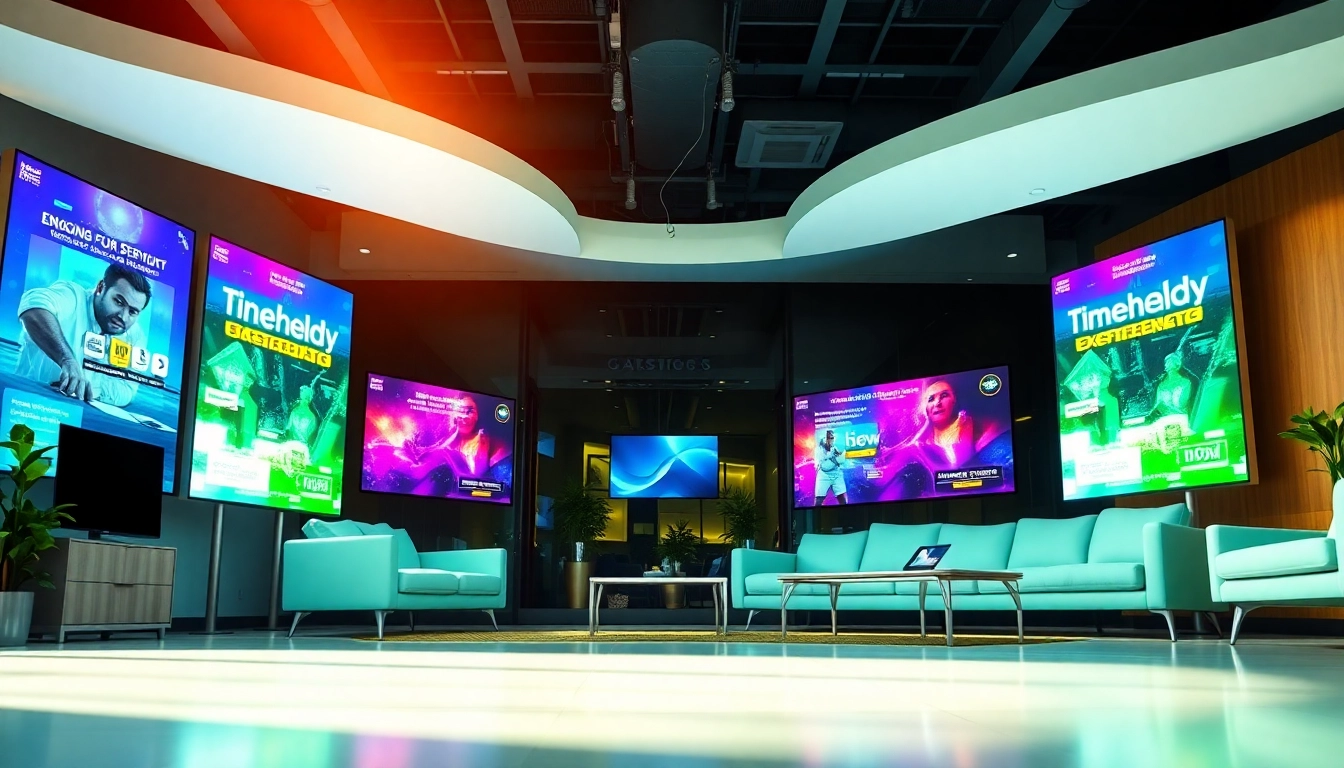Introduction to Free Signage Platform for Businesses
In today’s digital landscape, businesses require innovative and efficient ways to communicate messages to customers and employees. One such solution is utilizing a Free signage platform for businesses. These platforms enable organizations to display visually striking content, enhancing the customer experience and improving internal communications. This article aims to explore what a free signage platform offers, its benefits, key features, best practices, and the future of digital signage in a business context.
What is a Free Signage Platform?
A free signage platform is a software application designed to help businesses and organizations create, manage, and display digital content across various screens. This content may range from promotional videos and images to important announcements and menus. Unlike traditional signage, which can be costly and labor-intensive to produce, free signage platforms leverage cloud technology, allowing users to easily update and display information in real time.
Benefits of Using Free Signage Platforms
Integrating a free signage platform into your business operations can yield numerous advantages:
- Cost-Effective: As the name implies, a free signage platform eliminates upfront and ongoing costs associated with traditional signage.
- Dynamic Content: Unlike static displays, digital signage allows businesses to update content instantly—ideal for promotions, news, and menu changes.
- Improved Communication: Businesses can easily broadcast important messages to both customers and employees, ensuring everyone is informed.
- Enhancing Engagement: Visual content tends to capture attention more effectively than written text, fostering greater customer engagement.
- Data Collection: Certain platforms offer analytics to track viewer engagement and effectiveness, helping refine messaging strategies.
Common Use Cases for Businesses
Free signage platforms are versatile and can be adapted for various business needs, including:
- Retail Displays: Showcase products, advertisements, and promotions to attract customers.
- Corporate Messaging: Share internal updates, event announcements, or safety information to employees.
- Menus and Pricing: Restaurants can dynamically update their menu items and prices, reducing errors and enhancing customer experience.
- Event Promotion: Use signage at events to share schedules, speaker information, and directions.
- Wayfinding: Help guests navigate large facilities, such as hospitals or malls, with clear and informative signage.
Key Features of Free Signage Platform for Businesses
User-Friendly Interface
One of the critical aspects of a successful signage platform is its user interface. A user-friendly platform should be intuitive, requiring minimal training for users to navigate effortlessly. Key features may include:
- Drag-and-Drop Functionality: Enabling users to easily upload and organize content without needing technical skills.
- Template Availability: Offering pre-designed templates that can expedite the content development process.
- Mobile Optimization: Allowing users to manage signage content directly from their mobile devices.
Content Customization Options
Flexibility in content customization is essential for brands to maintain their identity. A robust platform should provide:
- Branding Features: Options to upload logos, use brand colors, and select fonts that align with the company’s visual identity.
- Media Compatibility: The ability to incorporate various types of content, such as videos, animations, and images, into signage presentations.
- Scheduling Functions: Users should have the option to pre-schedule content delivery based on time or specific events.
Multi-Screen Management
For businesses operating in multiple locations or utilizing several screens, effective multi-screen management is paramount. Key features include:
- Centralized Control: Make updates to all screens from a central point, ensuring that messaging is consistent.
- Group Management: Organize screens into specific groups for targeted content delivery.
- Real-Time Monitoring: Track the status of each screen to ensure proper functioning and content delivery.
Getting Started with Free Signage Platform for Businesses
Step-by-Step Registration Process
Starting with a free signage platform typically involves an easy registration process. Generally, the steps may include:
- Sign Up: Visit the platform’s website and create an account, providing basic information such as your name, email, and company details.
- Verification: Confirm your email address through a verification link sent to your inbox.
- Profile Setup: Customize your profile by entering additional business information and preferences.
Setting Up Your First Display
Once registered, the next step is to set up your first display:
- Choose Display Type: Select the type of screen or device that will showcase your content—this could be tablets, digital kiosks, or large displays.
- Connect Your Device: Follow the platform’s instructions to connect your screen to the signage software.
- Configuration: Set screen orientation, resolution, and location for optimal display.
Content Creation and Scheduling
Creating compelling content and scheduling when it should be displayed is fundamental to the success of your signage efforts:
- Content Creation: Leverage the platform’s templates or design tools to create engaging content tailored to your audience.
- Upload Media: Add pictures, videos, and other media to complement your messaging.
- Schedule Content: Use the scheduling feature to set times for when specific content should be displayed on your screens.
Best Practices for Effective Digital Signage
Design Tips for Engaging Content
The design of your digital content plays a crucial role in viewers’ engagement. Follow these design tips:
- Keep It Simple: Avoid clutter; prioritize clear and concise messaging.
- Readable Text: Use large fonts and ensure high contrast between text and background for visibility from a distance.
- High-Quality Images: Always use high-resolution images and videos to maintain a professional appearance.
- Call to Action: Include effective calls to action to prompt desired responses from viewers, such as visiting a website or special offers.
Strategic Placement of Signage
Positioning your digital signage strategically can significantly affect its impact:
- High-Traffic Areas: Place signage where it will be seen by the most people, such as entrance areas or waiting rooms.
- Height Consideration: Ensure that the signage is at eye level to maximize visibility and engagement.
- Avoid Obstructions: Be mindful of physical barriers that could impede viewing, such as furniture or other displays.
Measuring Effectiveness and Engagement
To ensure your digital signage is effective, measure engagement through metrics:
- Analytics Tools: Use integrated analytics within the platform to gauge viewer interactions and content performance.
- Feedback Surveys: Implement methods to gather audience feedback to continually improve content.
- A/B Testing: Experiment with different types of content and placements to identify what resonates best with your audience.
Future of Digital Signage in Business
Trends Influencing Digital Signage
The landscape of digital signage is continually evolving, influenced by emerging trends:
- Personalization: Tailoring content based on audience demographics and behavior will become increasingly common, enhancing viewer engagement.
- Interactivity: Interactive displays that allow customer interaction can enhance the experience and lead to better engagement.
- Integration with Social Media: Displaying social media feeds to engage audiences and create a sense of community around your brand.
Evolving Technology and Its Impact
Rapid advancements in technology continue to shape how digital signage is deployed:
- Artificial Intelligence: AI-driven analytics can help predict consumer behavior, leading to more targeted content.
- Augmented Reality: Integrating AR can create highly engaging experiences, allowing viewers to visualize products in real-time.
- Cloud Computing: Cloud-based solutions provide flexibility and facilitate remote management of multiple displays.
Case Studies and Success Stories
Examining real-world applications of digital signage can provide insights into effective strategies. Businesses in various industries have successfully implemented free signage platforms, leading to increased engagement and sales. For instance, retail businesses using digital signage to showcase promotions have reported a spike in customer interest and sales conversions. Similarly, corporate offices that adopted digital displays for internal communications saw improved employee awareness of important announcements and initiatives.



